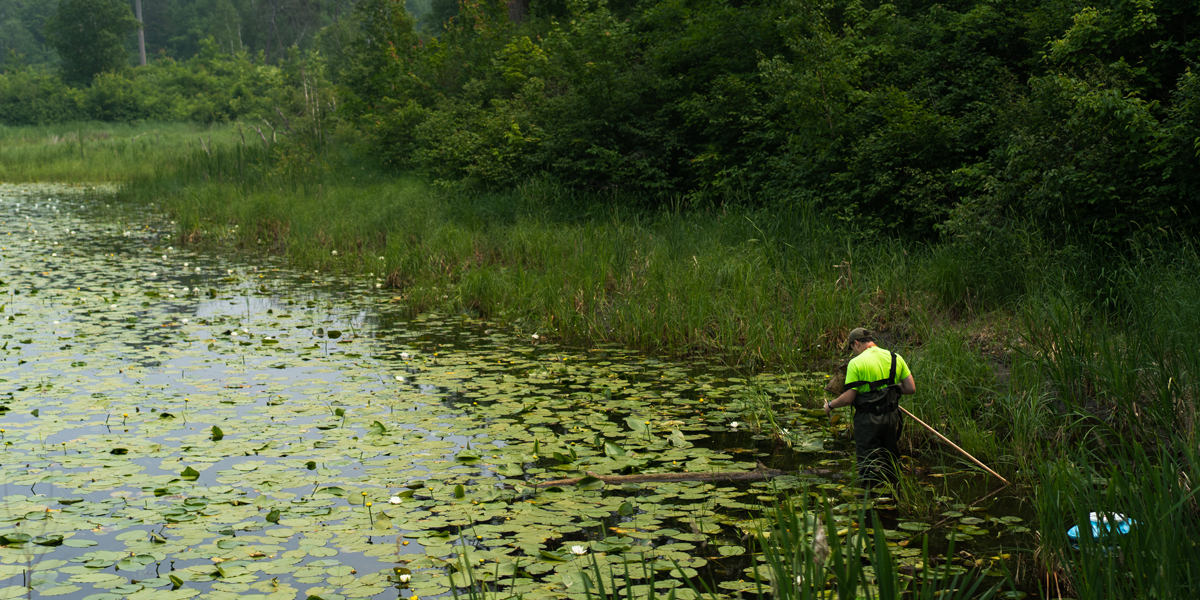
As the bus full of incoming CBS first-year students turned onto Wilderness Loop, my heart began to pound. Thoughts raced through my head about what I was going to experience the next few days at my Nature of Life session at Itasca Biological Station and Laboratories. Unsure of what I was getting myself into, my anxiety began to creep in and I started to feel panic. Just when my worries began peaking, the station came into view accompanied by the sound of a loud blast from a horn heralding our arrival.
Surrounded by the flora and fauna of the northwoods, the surreal image of the station resting on the shore of Lake Itasca calmed any worries I had about my next three days there back in 2018. During my experience at Itasca as a first-year student, I discovered my love for ecology and working in the field. The passion I developed for field ecology and animal interactions would lead me to return to the station three more times: once as a Nature of Life peer mentor, once as a field biology student and, most recently, as a graduate student researcher.
My research journey at the station began when my colleague and mentor Dr. Kate Feller first encountered giant waterbugs when she was guest lecturing at Itasca for an animal behavior class. I met Dr. Feller when she was a postdoctoral research associate at University of Minnesota and I was an undergrad working in Dr. Paloma Gonzalez Bellido’s lab. Dr. Feller brought up the idea of working on the giant water bugs and their prey selection behaviors.
After learning about this project and these fascinating animals, I eagerly signed up. We found that two native species of giant water bug have size-specific prey preferences, with the significantly larger species, Lethocerus americanus, preferring larger prey while the smaller species, Belostoma fluminuem, prefers prey specifically between two and three mm.
After this initial project, my love and passion for these insects exponentially grew and I continued to carry out research projects on their behaviors and visual ecology. Recently, I became interested in how giant water bugs shift from a fully aquatic lifestyle as a nymph to an amphibious lifestyle as an adult. I am specifically interested in how the visual system (eyes and corresponding neurons) accommodates this lifestyle transition. My most recent adventure to the station was funded by the Itasca Director’s Fellowship. I collected over 200 individuals of B. flumineum to study this question. I conducted behavioral experiments to test for differences in vision of nymphs and adults when the animal is placed in water and air.
The research I conduct on giant water bugs began at the station and has continuously brought me back. I can say without a doubt that if I had not chosen the College of Biological Sciences and gone to Nature of Life at the station I would not be the researcher, or person, I am today. To the station and its staff, thank you for making Itasca a truly magical place and I am forever grateful for the guidance and experiences it has provided me.
—Tanner Mierow